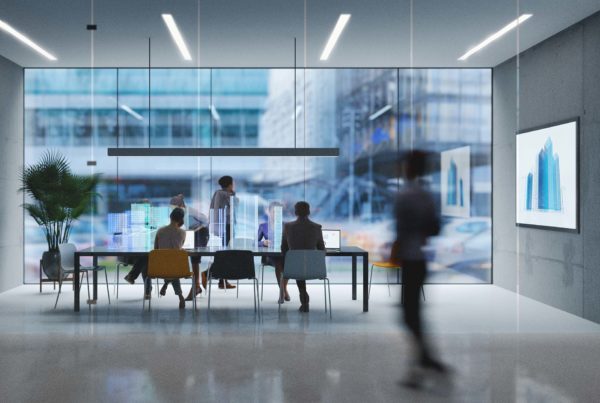Within the range of business initiatives, “Enterprise Resource Planning (ERP) implementation” is often viewed as a project. It created with a defined scope, a budget, a timeline, and a go-live date.
However, to truly unlock the transformative power of an ERP system and achieve lasting value, organizations must shift their approach: an ERP implementation is not merely a project to be completed, but an ongoing journey of evolution, adaptation, and continuous improvement.
Viewing an ERP rollout as a finite project with a definitive end-date is a common pitfall. This perspective can lead to a premature declaration of victory at go-live, followed by a gradual decline in system utilization, user dissatisfaction, and an ERP that fails to keep pace with the evolving needs of the business. The reality is, go-live is just one significant milestone in a much longer voyage.
You have built the house and have moved in. Now you need to decorate it and make it a home. After you do that, you then need to do some landscaping.
We get it, the journey from the old system to go-live on the new ERP Software is hard work so you’re exhausted.
The “Project” Trap: Short-Sightedness and Missed Opportunities
When ERP implementation is treated solely as a project, several issues can arise:
- Focus on Technical Go-Live: The primary goal becomes getting the system operational, often at the expense of thorough change management, comprehensive user training, and strategic alignment with long-term business objectives.
- Underutilized Capabilities: Once the initial “project” is deemed complete, dedicated resources are often reassigned, and the impetus for exploring advanced features or optimizing workflows wanes.
- Resistance to Change: If users feel the system was “done to them” rather than “done with them,” adoption suffers, and workarounds proliferate. It also takes time for people to embrace the new ways. Leaving the comfortable old ways behind can be challenging.
- Stagnation: Businesses are dynamic. Processes change, markets shift, and new opportunities emerge. A “set it and forget it” ERP quickly becomes a relic, hindering rather than enabling growth.
- Diminished ROI: The full return on a significant ERP investment is realized over time, through continuous optimization and alignment with business strategy, not just at the initial deployment.
Embracing the ERP Journey: A Roadmap to Sustained Value
Treating ERP implementation as a journey fosters a culture of ongoing engagement and improvement. This journey encompasses several critical phases that extend far beyond the initial deployment:
- Strategic Planning & Vision (The Pre-Project): This foundational stage involves more than just selecting software. It’s about defining the long-term business vision and how the ERP will support it. What are the key performance indicators (KPIs)? What processes need transformation? How will success be measured not just at go-live, but one, three, or five years down the line?
- The Implementation “Project” (The First Leg): This is the intensive phase of configuration, data migration, testing, and the crucial go-live. While it has project-like characteristics, it should be executed with the long-term journey in mind, ensuring robust documentation, knowledge transfer, and a focus on user empowerment.
- Stabilization & Adoption (Finding Your Rhythm): Post go-live, there’s an essential period of stabilizing the system, addressing immediate issues, and intensely focusing on user adoption. This involves ongoing training, support, and actively soliciting user feedback to identify and resolve pain points.
- Continuous Improvement & Optimization (The Scenic Route): This is where the real journey unfolds. Organizations should regularly review how the ERP is being used, identify areas for process improvement, leverage underutilized modules or features, and explore new functionalities that vendors release. Data analytics from the ERP itself can provide powerful insights for optimization.
- Adaptation & Evolution (Navigating New Terrain): As the business grows, acquires new entities, enters new markets, or faces new regulatory landscapes, the ERP must adapt. This might involve new configurations, integrations with other systems, or significant upgrades. A journey mindset anticipates and plans for this evolution.
- The People & Partnership Imperative (Fellow Travelers): An ERP journey heavily relies on people. Continuous change management, ongoing training, and fostering a sense of ownership among users are critical. Furthermore, the relationship with the ERP vendor or implementation partner often evolves into a long-term strategic partnership, providing ongoing support, expertise, and insights into future capabilities.
Benefits of the Journey Mindset
Adopting a long-term perspective on ERP yields significant advantages:
- Maximized Return on Investment (ROI): Continuously aligning the ERP with business goals ensures the system delivers ongoing value.
- Improved User Satisfaction & Adoption: When users feel supported and see the system evolving to meet their needs, they are more likely to embrace it.
- Enhanced Business Agility: An adaptable ERP allows the organization to respond more effectively to market changes and new opportunities.
- Greater Operational Efficiency: Ongoing process refinement and optimization drive continuous improvements in efficiency.
- Extended System Longevity: An ERP that evolves with the business remains a valuable asset for longer, delaying the need for costly replacements.
- Data-Driven Decision Making: A culture of continuous improvement encourages better use of ERP data for strategic insights.
- Creating an Adaptable Culture: When change occurs infrequently, people are jarred when it occurs. On the other hand, when people become accustomed to change, they will resist new change less.
Conclusion: Your ERP is a relationship, Not a Destination
An ERP system is one of the most significant, high impact investments a company can make. To treat its implementation as a mere project sells that investment short. By embracing the concept of an ERP journey, organizations foster a dynamic, evolving relationship with their system. Go-live is not the finish line; it’s the start of a continuous cycle of learning, adapting, and optimizing. This journey, while requiring sustained effort and strategic foresight, is what ultimately transforms an ERP from a software package into a powerful engine for long-term business success and growth. Prepare for the marathon, not just the sprint, and your ERP will serve you well every step of the way.











